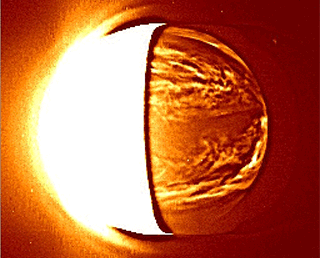A movie of the Venus' night-side produced by IR2
This movie is produced from the IR2 2.26-μm images, acquired on 29 March 2016 at a distance
of 0.36 million km. Original 4 images were acquired with 4-hour intervals from 16:03 JST (07:03 UT).
In 4 hours, the super-rotating clouds move by ~10 degrees. Such images are numerically derotated to produce
intermediate images so that the resultant motion becomes smoother. Deformation, appearance and disapperance
of clouds are obvious in this movie. As the mission enters the "nominal" observing phase, we plan to shorten
the intervals to 2 hours or even shorter so the high-definition movies will definitely help understanding of
the Venus atmosphere.
